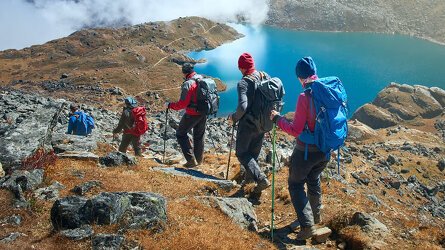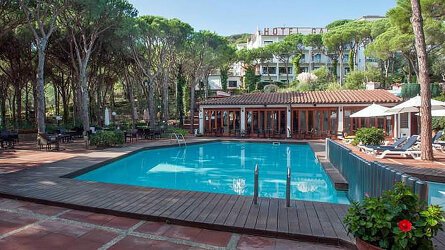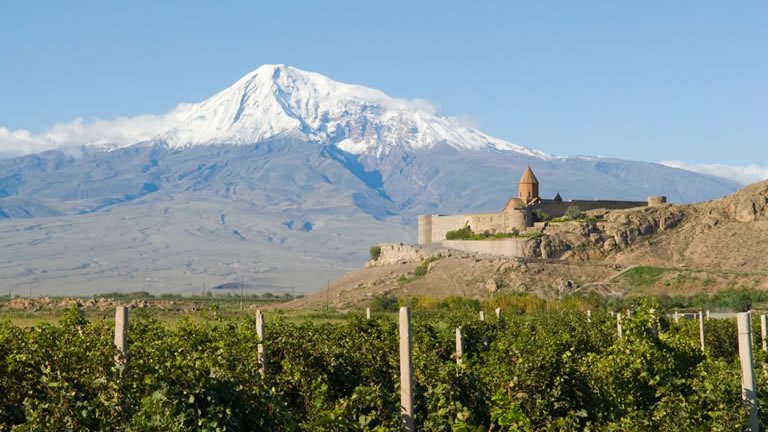Overview
Itinerary
We have the morning at leisure. At midday we take a trip to the Kotayk region to see the Hellenistic temple of Garni and Geghard rock Monastery. Garni was built in the 1st century AD and served as a summer residence for Armenian kings. It is the only pagan temple on the territory of modern Armenia, others were destroyed after the adoption of Christianity. Here in one of the traditional houses we will have the chance to observe the traditional methods of baking national Armenian flat bread called “lavash”.
This demonstration also includes tasting local cheese and greens and is a good opportunity to meet local people. Geghard - was initially known simply as Ayrivank (Cave Monastery). The present buildings, which are carved right into the solid rock, date back to 10th - 13th centuries AD, at which time it was renamed Geghard meaning "lance" in Armenian. The name refers to the biblical lance used by a Roman soldier to pierce Christ's body. The Monastery is a UNESCO World Heritage Site. Return to Yerevan. Stay: Hotel Europe (or similar) (B/L).
A short drive through the city takes us to the impressive seventh-century ruins of Zvartnots Cathedral, the churches of Hripsime and Gayane and then Echmiadzin. The main cathedral sits among hedges and lawns, where clergy in dark robes sit in theological debate with Mount Ararat as the backdrop. In the gardens, there are many fine khachkars (carved cross stones) and bell towers. Due to renovation works, the cathedral may continue to be closed during 2023 and so we may only be able to view it from outside. Next stop is Echmiadzin cathedral, the religious centre of the Armenian Apostolic Church. We'll have lunch at Machanents House, on one of the oldest streets of Echmiadzin and part of cultural heart of the town.
Back in Yerevan we will have a sightseeing tour of the capital along major avenues and squares visiting the most popular public buildings and monuments. Amongst all the sites visited we will have a short stop at the fruit and vegetable market. Next, we will visit the Tsitsernakaberd Genocide Memorial and Museum. The site is dedicated to the victims of the Armenian genocide committed by Ottoman Turks during World War I. The visit will help us understand why a huge Armenian diaspora developed across the world. Stay: Hotel Europe (or similar) (B/L).
Today begins with a visit to Matenadaran Museum - one of the richest book-depositories in the world, and recognized as such by UNESCO. Its collection of about 17,000 manuscripts includes almost all areas of ancient and medieval Armenian culture and sciences as well as manuscripts in Arabic, Persian, Greek, Syrian, Latin, Ethiopian, Indian, Japanese and others. We continue the day by heading south to Khor Virap – one of the holiest sites in Armenia, the site of the underground pit where Gregory the Illuminator was imprisoned before converting King Tiridat III to Christianity. The monastery has a spectacular view to Mount Ararat.
Next is Noravank – a unique monastery situated in Noravank canyon. The road to Noravank monastery is an adventure itself. The high rocks on both sides of the route almost block out the sky above until the picturesque view of one of the most remarkable monastery complexes in Armenia appears. We'll have lunch in Noravank then head back towards Yerevan stopping on the way for some wine tasting at Vayots Dzor, the best know of Armenia's wine producing regions, home to Areni wine. Stay: Hotel Europe (or similar) (B/L).
Our first visit today is to Noradouz – the "Forest of Khachkars" (cross-stones) which date back to the 10th century. The Khachkar is unique to Armenian tradition, incorporating both pagan and Christian symbols into a spiritual and artistic form that endures to the present day. Noraduz itself is an old graveyard with approx. 900 khachkars from various periods and of various styles. We'll meet a local artisan, a sculptor who carves khachkars. We'll receive a demonstration on how the carvings are made. We continue to Lake Sevan – the largest lake in Armenia and one of the largest high-altitude freshwater lakes in the world. Its surface is at an altitude of 1,950 m above sea level. Along with Lake Van and Lake Urmia, Sevan was one of the three great lakes of the Armenian Kingdom, referred to as the seas of Armenia, and it is the only one within the boundaries of present-day Armenia.
While at Sevan we will visit Sevanavank – one of the most significant historic sites near the lake. We'll have a fish lunch by the shore of the lake. Our next stop is the resort town of Dilijan famous for its thick forests and subtropical climate. Besides being a resort town, it has also gained fame for the streets in its old centre where handicrafts are produced. The last highlight of the day is a stop at Fioletovo village for a tea break with a difference.
Fioletovo is inhabited by an ethnic minority of Russian origin – the Molokans. This small community was forced from Russia centuries ago because of religious conflict. In Armenia they live in villages producing their own dairy products, meat and vegetables and lead a traditional lifestyle. We'll enjoy homemade food and tea served from special vessels called “samovars”. Stay: Hotel Europe (or similar) (B/L).
Today is our longest day. We drive three hours to Uplistsikhe, once an enormous rock-hewn town with pre-Christian roots. It sits by the Mtkvari River and is notable for its unique rock-cut style and the co-existence of pagan and Christian architecture. Ancient temples and theatres can still be identified, and we walk up sandstone steps for a view across the river and plains. We then take a short drive to the town of Gori, birthplace of Joseph Stalin.
Visiting Stalin Square, where a huge statue of him used to stand, we take a guided tour of the fascinating museum about his life and the role he played in the Soviet Union. Stalin's bulletproof train carriage, which he used to travel to the Potsdam Conference in 1945, lies in the museum grounds. It is worth a visit for its simple but elegant interior. The small wooden house where he was born is also here in a temple-like structure – there are still people in Georgia who greatly admire Stalin. We then continue to Kutaisi where we spend the night. Stay: Kutaisi guesthouse (B/D).
Trip Inclusions
- See Mount Ararat towering over Yerevan
- Explore spectacular monasteries in Armenia including Khor Virap
- Visit Unesco-listed churches and fortresses in Georgia
- Walk among the pre-Christian cave houses in Uplistsikhe
- Experience cafe culture in Tbilisi
- Have the option to add-on an Azerbaijan extension
- Citizen Science departures available on this trip
- 12 nights staying in hotels and one night in a guesthouse
- Travel by private minibus
- All breakfasts, seven lunches and four dinners
- Itinerary and inclusions are subject to change
- Price is for land, cruise and internal flights as specified. Flights not specified are not included

From classic small group tours & family adventures, to walking holidays, cycling trips and self-guided tours. Read more

Exodus chooses their Leaders carefully. Professional, dedicated and are passionate about sharing their home countries. Read more

Wherever possible, Exodus chooses properties that are locally owned and that reflect the area you are visiting. Read more
Prices & Dates
There are currently no departures available on this trip. Either it's the end of the season and new departures will be released shortly, or this itinerary has been changed and will no longer continue. Feel free to contact us for information about when next seasons dates will be released or click here to view the general release dates for all destinations.
Tour & cruises prices are per person. Prices shown have savings applied, are subject to availability and may be withdrawn at any time without notice. Prices and trip information are correct at the time at this point in time, however are subject to confirmation at the time of booking and are subject to change by Exodus. For cruise itineraries, cabin images are sourced from Exodus. These should be treated as indicative only. Cabin inclusions, upholsteries and room layout may differ to the image(s) shown depending on the ship selected and your sailing dates.









